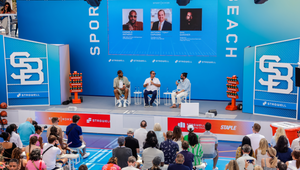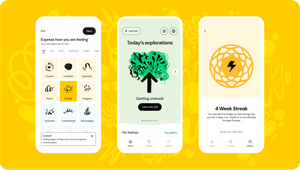
How AI Is Shaping the Newsroom of the Future (And Where Fondue Recipes Fit In)

On the high-speed train from Paris to Zurich to join the first Ringier A.G. Editorial Summit in September, a thought came to mind: everything in AI is moving as fast as this train. Only three months earlier, Ringier’s CEO Marc Walder and I were discussing how Generative Artificial Intelligence (AI) will impact media and newsrooms. Since then, new questions have been raised every day on the subject.
The biggest being: Can generative AI create a new golden age for media brands?
Ringier A.G. is one of the largest media organisations in Europe. Founded in 1833, it unifies dozens of brands in Media, Marketplaces, Entertainment and Technology and is present in Switzerland, Europe and Africa. As such, executives at Ringier observe and embrace the evolution of AI with deep interest and, understandably, some concerns. Their most senior executives, as well as Mr. Michael Ringier himself, gathered in Zurich with a highly curated selection of speakers. Among those were Lionel Barber, former chief editor of the Financial Times (2005–2020); Dmitry Shishkin, an independent digital consultant formerly responsible for developing and implementing the BBC’s digital editorial offer for 41 non-English foreign languages; and Dr. Léa Steinacker, social scientist, journalist and award-winning entrepreneur who delves deep into the impact of AI in her research.
Impressed and humbled by such a senior audience, I made my way along the lake to Ringier headquarters to provide my perspective on AI and its impact on the media industry.
For one day, Marc invited us to take a deep breath to consider what’s really going on in the field of AI and Media. We agreed that for the media industry, AI is not a surface signal but a large current moving in the depths of the ocean. Every day another news platform is blocking access to large language models (LLMs) in a defensive move to protect, not its information, but its value. It can’t last. All large media brands will soon realise content platforms will need their own LLM, either by leveraging existing models, or building their own from scratch. In both cases, media brands need those LLMs to crawl other content platforms at large, including their competitors. For context, the portion of proprietary information in Bloomberg’s owned LLM is around 3%. They call the rest 'The Pile' - in other words, the open Web.
Pure Facts vs. Pure Stories and Everything In Between
Few people have seen in real life how a newsroom functions, how information is identified and created, and how a nascent piece of breaking news flows across desks and is written, edited, formatted and published in a matter of minutes. The same piece of news can then be expanded into an article, a more in-depth analysis, a full investigation, or, in some cases, an op-ed.
At a 5000-meter-high view, we could consider that all the information created by a newsroom is contained in a spectrum that goes from pure fact to pure stories, with a lot of nuances in between. A pure fact is the “weather tomorrow in Zurich” or a sports result. Pure stories are political op-eds where biases are important and actually expected. Newsroom traffic between those two extremes creates a relevant and valuable mix depending on the nature of the subject.
What has changed for the media industry since the early 2000s is that the fact-based side of the spectrum has irrevocably been lost to search engines and mobile operating systems. You don’t need to go anywhere to check sports results, to know the weather tomorrow or to get a glance at stock prices. The story-based side of the spectrum is still very much the private land of the media brands, where authorship, perspective and originality represent the highest value proposition a brand can offer to its audience.
But those two extremes represent a small portion of what newsrooms can create. The vast majority of news resides in between facts and opinions where the value is defined by both hard factors (such as accuracy, credibility and speed of publishing) and soft factors (such as authorship and brand voice).
This is where the war between newsroom and competitive AI will rage.
The Relevance of the Fondue Recipe
Let’s look at a very mundane, but crucial example of news: 'How to make a great Swiss Fondue.' Recipes are a very popular type of content on news platforms. They bring traffic, easily generate revenue through embedded ads and can be created at low cost and effort. A recipe can definitely sit on the fact side of the spectrum. But if you are a fan of Swiss fondue like I am you don’t want just a list of ingredients, you want an expert opinion. You want to read from the local chef who has been making fondue for years. You want to know the ins and outs of integrating white wine into the cheese, and why the right cast iron pot is imperative to a great fondue. You want a story, even for a recipe.
This, right here, sits at the core of the new competitive landscape of news. LLMs are pushing to move to the story side of the spectrum as they can pantomime being a chef. In the face of this, editorial platforms must hold their ground and elevate true authorship. This doesn’t mean avoiding AI; it requires a responsible and sceptical embracing of the technology.
How can newsrooms fight against competitive LLMs that are capable of inundating audiences with endless articles produced in minutes? True authorship is the source of a good story that embodies the brand value and identity - that makes it special, unique and attractive. This will always be the case. Audiences value authors and their perspectives on things. They want to know who they are, what they have done, and why they think the way they do. In other words, what makes them human beings and not AI.
Where AI Is Going to Elevate the Newsroom to Alps Levels
The future of newsrooms lies in their ability to embrace AI. While everyone is focusing on the visible part of the iceberg - the true power of AI for media brands mostly resides in the newsrooms, on the back-end side of the user experience.
Generative AI will create a competitive advantage for the journalists, editorial and content production teams who are eagerly integrating it into their workflows. Here are four streams of work in the newsroom that will be soon revolutionised by AI:
Audience analysis: By leveraging AI’s ability to make correlations that are otherwise invisible to the human eye, audience research teams will be able to identify micro-segments, build virtual personas and interact with those through AI agents to test audience interests and mindset hypotheses. This will fundamentally transform how newsrooms will address audience segmentations, which remains pretty archaic today.
Editorial discovery: Editorial teams will be able to identify emerging trends and interests for these audiences. By training LLMs with their existing content and data (potentially across multiple destinations and sub-brands), newsrooms can leverage AI to support their editorial research, uncover new facets to existing stories, discover controversial angles and create new types of storytelling. Gen AI will soon become a powerful tool that journalists and editors will have permanently at hand to expand their editorial horizons, just like designers, architects and developers.
Content production: Generative AI will become a production powerhouse for newsrooms that will be able to accelerate the production of new formats: create shorter forms, generate explainers, and create imagery, videos and podcasts. Gen AI will also impact data journalism, a field that today is very production-heavy. It requires massive resources to convert text-based stories into visual experiences with 10 times fewer resources than currently required.
Distribution strategy: Those new automated formats can be adapted to various audience needs by changing the style, the tone of the story and the length. Want it more liberal or more conservative? Want it to sound like an expert or on the contrary make it easy for everyone to understand? Want it more serious or more fun? Want it tailored to social media, a video platform or a white paper? The possibilities of accelerating content distribution will be nearly endless.
At the end of my day in Zurich, sunset is hovering over the beautiful and shimmering lake, and Ringier senior executives and guests are gathering at one of the finest restaurants in town. Conversations on AI and digital product strategy are infusing every table. There is a sense of urgency in getting ahead of the competition; the momentum to get things started even if we don’t have the answers to all questions and the impression that AI is not something you buy off the shelf but a muscle you build over time.
To be relevant tomorrow with AI, media organisations need to train themselves while they train their LLMs. There’s one thing though that is unquestionable: Media brands must celebrate, more than ever, original content while embracing the power of AI.
Matthieu Mingasson is head of design transformation at Code and Theory. Matthieu has been leading the strategic thinking and creative work for global clients including Citibank, Ernst & Young, Goldman Sachs, Google, The Guardian, Lenovo, NBC and Pfizer. He began his career as a designer for Rolling Stone and Le Nouvel Observateur.















